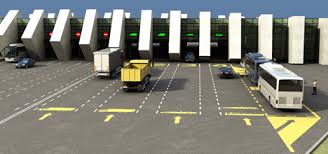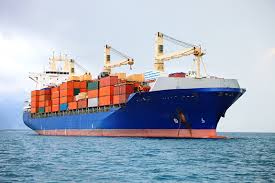The international contract
An International contract is an agreement between two or more parties belonging to different legal systems who have the intention to implement a commercial transaction.
It is recommended to always use model contracts for the international trade of the International Chamber of Commerce as a base, then evaluating the specific requirements dictated by the case that you need to regulate. Finally, you can proceed to the drafting of the final version, with access to a lawyer specializing in international law and / or in foreign trade law.
It is necessary to indicate in the contract the law of reference. The applicable law will be the one of the seller's country, the buyer's country, a third country's law or it could be also the reference to specific conventions or agreements between States.
When the contract is drawn up in two or more languages, you must specify the language to which attributes the official value, to avoid different interpretations of the multiple translations.
Essential elements of an International Contract are listed below:
- contracting parties definition: the contract must contain information to identify the involved subjects unequivocally
- premises are integral part of the contract: they introduce the parties and explain the reasons of the agreement
- commitments of the parties
- characteristics of the goods covered by the agreement: the nature, the use it is intended to, any tolerances, the price and the reference currency
- payment terms, indicating how to pay, the pay date and the credit institute. Besides the subject of bearing the costs of transportation of goods, insurance and customs clearance and the time when there is a change of the risks and responsibilities between buyer and seller (see Incoterms)
- goods delivery, specifying the term of delivery, characteristics of the packaging following the specific regulations of the destination Country and documents required to collect goods.
- clauses of seller protection, such as the force majeure clause exempting any liability in the event of unpredictable circumstances, such as wars or strikes
- exchange riskdoes not fall entirely on the only seller or buyer (which will have to protect themselves with special insurance) but the contract provides for the listing to a fixed exchange ratio
- dispute resolutionis the last of the essential element of the international contract, as a necessary condition to enforce against a defaulting counterparty.
Ask yourself
Keep in mind!
Do you really want to implement an international business?
- Category 1: Most open, excellent
Hong Kong, Singapore
- Category 2: Above average openness
Luxembourg, Belgium, Malta, Netherlands, United Arab Emirates, Ireland, Estonia, Iceland, Switzerland, Sweden, Norway, Slovakia, Denmark, Austria, Finland, Slovenia, Canada, Hungary, Czech Republic, Germany, Bulgaria, Australia, New Zealand, Lithuania, Chinese Taipei, Cyprus, United Kingdom
- Category 3: Average openness
Malaysia, Israel, Latvia, Chile, Poland, France, Ukraine, Romania, United States, Japan, Saudi Arabia, Italy, Portugal, Peru, Spain, Korea, Rep. of, Viet Nam, Turkey, Greece, Thailand, South Africa, Jordan, Colombia, Indonesia, Mexico
- Category 4: Below average openness
Kazakhstan, Egypt, China, Philippines, Russian Federation, Uruguay, Morocco, Tunisia, Argentina, India, Sri Lanka, Nigeria, Brazil, Kenya, Pakistan, Venezuela, Uganda, Algeria
- Category 5: Very weak
Bangladesh, Sudan, Ethiopia
International methods of payment
Because getting paid in full and on time is the ultimate goal for each export sale, an appropriate payment method must be chosen carefully to minimize the payment risk while also accommodating the needs of the buyer.
Exporters want to receive payment as soon as possible, preferably as soon as an order is placed or before the goods are sent to the importer.
Importers want to receive the goods as soon as possible but to delay payment as long as possible, preferably until after the goods are resold to generate enough income to pay the exporter.

| Least secure | Less secure | More secure | Most secure | ||
|---|---|---|---|---|---|
| Exporter | Consignment | Open Account | Documentary Collections | Letters of Credit | Cash-in-Advance |
| Importer | Cash-in-Advance | Letters of Credit | Documentary Collections | Open Account | Consignment |
The standard methods of payment used in international trade are:
- Cash in advance
- Open account (Consignment)
- Documentary collections
- Letters of Credit
Each payment method carries certain risks and costs, which often are the responsibility of the exporter. These costs and risks should be analyzed, evaluated and negotiated before shipping in order to price your product accordingly and satisfy all parties involved in the transaction.
Cash in Advance: The most secure method of trading for exporters and, consequently the least attractive for buyers. Payment is expected by the exporter, in full, prior to goods being shipped.
Open Account: This is the least secure method of trading for the exporter, but the most attractive to buyers. Goods are shipped and documents are remitted directly to the buyer, with a request for payment at the appropriate time (immediately, or at an agreed future date). An exporter has little or no control over the process, except for imposing future trading terms and conditions on the buyer. Clearly, this payment method is the most advantageous for the buyer, in cash flow and cost terms. As a consequence, Open Account trading should only be considered when an exporter is sufficiently confident that payment will be received.
Consignment: in international trade it is a variation of open account in which payment is sent to the exporter only after the goods have been sold by the foreign distributor to the end customer.
Documentary collection: the buyer can receive documents that allow the collection of the goods only after its payment. The proceeds against documents may take the form of "documents against payment" (documents against payment or / p) or the "documents against acceptance" (documents against acceptance or / a), where the documents are transferred to the buyer only following the acceptance of a financial document (such as a draft or a bill of exchange). The carrier may deliver the goods to the importer only after it has fulfilled its obligations. It is a system widely used in the transactions within the European Union, where short distances allow them delivered expeditious and annulment of the risks of stops of routes caused the banking documents. Belongs to this section also the Cash on Delivery where the carrier may deliver the goods to the importer only after it has fulfilled its obligations. It is a system widely used in the transactions within the European Union, where short distances allow fast delivery and no risks of stops caused by banking documents. The most common kind of payment by collection is the letter of credit.
Letters of credit: Form of payment, more complex and costly, it is used for transactions of high value or for non-European countries. A Letter of Credit (also known as a Documentary Credit) is a bank-to-bank commitment of payment in favour of an exporter (the Beneficiary), guaranteeing that payment will be made against certain documents that, on presentation, are found to be in compliance with terms set by the buyer (the Applicant). If not required by the foreign government, the letter of credit (L/C) is commonly used when the risk of non-payment is too great to allow any other form of payment except for cash in advance, and the buyer is unwilling or unable to pay that way. The letter of credit is an electronically generated contract between the buyer’s bank and the exporter. The buyer’s bank substitutes the credit of the buyer with their own, at a fee and with a set of instructions to accomplish in order to secure payment. The International Chamber of Commerce (ICC) writes the guidelines for using letters of credit.
Letter of Credit system
Conclusion of sales contract between two parties
Application for issue of a documentary letter of credit
Issue of the documentary letter of credit
Advising of the documentary letter of credit
Exporter

Importer

(Issuing Bank)

(Advising Bank)
Receipt of goods
Effecting payment
Taking up of documents
Delivery of goods and presentation of shipping documents
Taxes and barriers questions

Any commercial transaction with a foreign country involves obligations tax and customs, which vary from country to country: it is the concept of territoriality, necessary to determine both export within the European Union or with no European Countries.
In Europe
Transactions within the EU are not subject to barriers requirements: the goods are considered simply sent or received, not exported or imported. The only obligatory fulfillment for those who carry out transactions for the sale or purchase of goods with the EU is the periodic submission of lists to the customs offices, with deadlines related to the value of transactions. It is the Intrastat system, aimed to the collection of taxes and also to statistical survey of goods in and out for each State. The system is useful in collecting statistics on the trade in goods between European Union member states.
The supply of services is excluded from Intrastat.
Outside EU
In non-EU countries trading, each customs operation must be preceded by a written declaration to be presented to customs, drawn on a special form consists of 8 parts: the "Single Administrative Document" (SAD).
Temporary Export is also possible. It is the temporary sending of goods abroad (e.g. processing, repair, assembly, etc.), after receiving permission from the competent authority. This is the case of the ATA Carnet issued by the Chamber of Commerce, which allows the transfer of goods up to a maximum period of 12 months. After that period, goods must be re-imported into the country.
Credit Insurance
The main risk for the seller is the non-payment. If you are exporting your products, it is better for you to consider carefully the conditions of solvency of the buyer and the country to which it belongs and define payment methods that protect you from any risk of insolvency. If it is possible, ensure your own credit with an insurance cover, with private companies or public, against the risk of failure in payments, both for commercial or political reasons.
The insured value never represents 100% of the value of transaction.
The amount of the insurance is defined on the basis of a series of variables, including the characteristics of your company, the customer and the country in which you intended to export.
International Transport and Incoterms
The choice of the appropriate conditions of transport in order to correspond to some elements such as:
- general characteristics of goods and packaging (quantity, shape, weight and size)
- physical and chemical properties (solid, liquid, perishability, etc.)
- infrastructure available at the place of export and import (warehouses, loading and unloading equipment, etc.).
Depending on the characteristics of the goods, you can choose amongst the following different ways to perform transport:
Road transport is the most common within EU countries because it has the advantage of being entirely performed by the carrier. At Member States level there are several services, prices and agencies able to respond to all of your needs.

Rail transport is known to be slower but cheaper than the road one. It is also possible using specialized wagons (e.g. Refrigerated).

Ship transport is the most utilized in intercontinental delivery. It is the process of transport that a watercraft makes over water, such as a sea, ocean, lake, canal or river. Trips are less frequent compared to land transport and price quotations are complex to determine. Most of the time, it is necessary to place goods in a container.

Air transport gives you the possibility of very fast travel, thanks to many direct and indirect connections, but it is the most expensive type of transport when compared with the others.

ATTENTION!
a. Transport documents
They not only facilitate the movement of goods but are also, in certain cases, “documents of title”. They are also usually stipulated in Documentary Letters of Credit. This means that the documents are important not only for transportation but also provide the ability to control the goods after dispatch and control over payment timelines.
Transport documents: they travel with the goods and perform the following functions:
- insurance
- payment document
- note receivable
Keep in mind!
Whoever holds the document is entitled to possession of the goods!
b. Goods transit insurance
The hazards of conducting trade around the world, and in particular the risk of losing cargo at sea, has preoccupied the minds of merchants for centuries.
When goods cross state borders there may be situations that cannot be controlled. The purpose of goods in transit insurance is to identify the damage caused to goods and the related expenses of the policyholder. The insurance contract must be drawn up in a written form and indicate the general conditions and the risks covered by the policy. The value of the insurance premium is determined on the basis of multiple parameters, such as value, provenience, destination, packaging, type of transport, etc.
Keep in mind!
Carrier and Shipper have no obligation to insure goods.c. Incoterms
In order to avoid mis-interpretation, international definitions approved all over the World have been formulated. Incoterms (International Commercial Terms) have been incorporated in contracts for the sale of goods worldwide providing rules and guidance to importers, exporters, lawyers, transporters, insurers and students of international trade.
Incoterms determine who has the responsibility of transportation, cargo insurance, customs clearance (in case of non-EU countries) and the time when there is the change of risks and liability from the seller to the buyer.
Ask yourself
- Who should pay for transport?
- How and where is the delivery of the goods?
- Where and when are the risks transferred?
- Who should pay for all other operations?
- Critical point?
For any kind of action you will decide to implement in this field, please remember to contact your national Chamber of Commerce or any other specialized agency



